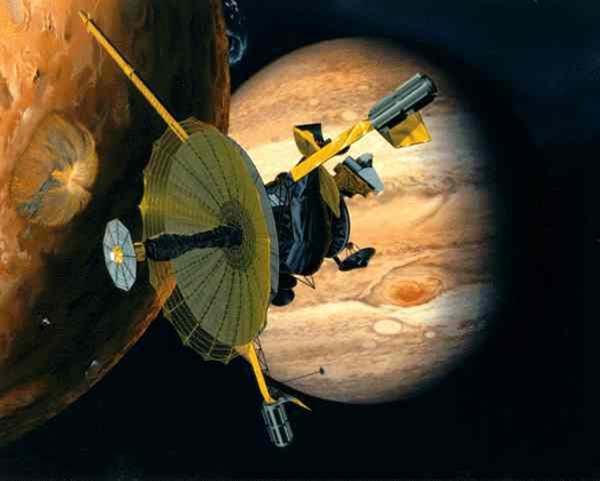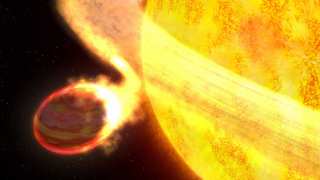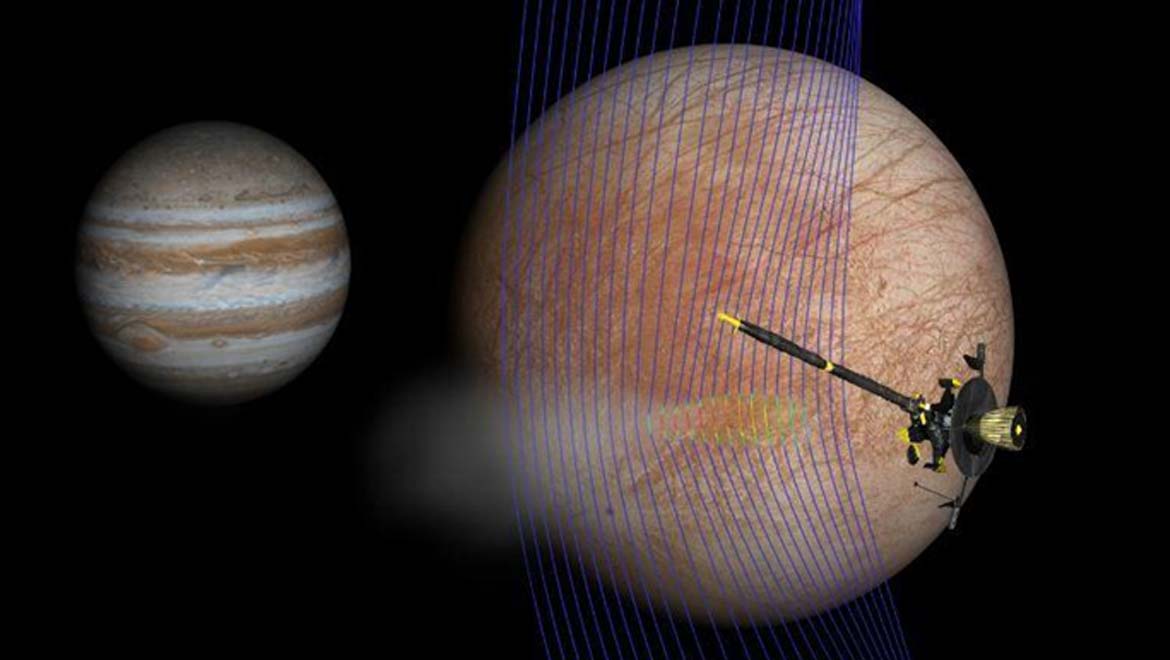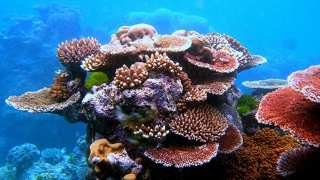Europa, a moon that orbits Jupiter, looks like an inert icy ball from the outside. However, many astronomers theorize that there is an Earth-like ocean underneath the crust. This crust could also be hiding energy sources. Therefore, conditions for life may indeed exist on Europa!
A team of scientists recently re-evaluated some of the data from the Galileo spacecraft, which orbited Jupiter for the length of its mission. During this time, Galileo also passed between Europa and the planet.
Now, it has been concluded by the group that magnetic field signatures associated with these instances may indicate the presence of water-vapor plumes emanating from Europa. If this turns out to be correct, Galileo may even have passed through such a plume on its orbital path.
These exciting possibilities may be confirmed in an upcoming mission to the potentially-alive moon.
The Case for Life on Europa
From what has been discovered yet, Europa is a strange world. The moon is believed to be encased in a tough, icy shell, and should, naturally, be uniformly and profoundly cold.
However, studies of the Jovian moon, conducted using tools such as the Hubble telescope, have indicated that there are zones of thermal variability on the moon.
Further, Europa has also been observed to exude streams of material from somewhere near its southern pole. This material could be water vapor, possibly due to the characteristic magnetic field anomalies.
The initial observations of these features suggest that the plumes may achieve a height of up to 400km; however, subsequent conservative models put this figure at about 25km.
Simulations and models, constructed using relevant data from Europa and Enceladus (another Jovian moon on which volatile, gaseous water may exist) indicate that water vapor would have to reach velocities of, at least, 300 meters per second to form plumes on the moon.
This phenomenon would require vents that are home to temperatures of approximately 230 Kelvin (K), which is far above Europa's normal ambient temperature at around 100K. However, these numbers are still lesser than the temperatures required for the stability of any high-salt solutions. The presence of a salty solution in these conditions could explain why the vapor in the plume does not simply freeze on expulsion.
Therefore, there has to be an alternative source of energy that sustains the thermal anomalies on Europa - one that may also support a form of life on the water-rich world.
More Missions to Europa
The putative water vapor was also thought to fall back onto the surface of Europa's external ice-crust, after each individual plume event. Therefore, future exploratory missions may be able to capture physical samples without the risk of contaminating the moon, as a whole.
This, in fact, is part of the aim of the Europa Clipper mission. The project, which is taking shape at NASA's Jet Propulsion Lab (JPL), also involves instruments to measure the electron plasma- and magnetism-related properties of the moon.
The Clipper craft is being sent on its journey, as described in a paper that has recently been published in Nature Astronomy. The article asserts that the data captured as Galileo traveled past the moon is most likely associated with the eruption of a plume at the time.
Galileo and Europa
The data was collected in the course of the two orbital passes - E12 and E26 - that took Galileo's trajectory closest to Europa (achieving an altitude of 400km or less).
A team of four scientists, from the University of Iowa's Department of Physics and Astronomy, the Department of Earth, Planetary and Space Sciences at University of California (Los Angeles), and the Department of Climate and Space Sciences and Engineering at University of Michigan (Ann Arbor), re-assessed the data collected by Galileo's magnetometer at the time.

Galileo was the first spacecraft that orbited Jupiter. (Source: Aerospaceguide.net)
The team determined that the instrument had recorded a magnetic field on Europa that had experienced a rotation of approximately 1000km. This field also experienced a marked drop of over 200 nanoteslas in strength.
Furthermore, Galileo's plasma-spectrometer also recorded a spike, indicative of a sharp increase in plasma density, while flying over Europa. This plasma surrounds the moon and may have exhibited marked changes, in response to plumes, in previous studies of the world.
However, the scientists also suggested that this increase in plasma density could have been associated with Jupiter, a planet which also possessed enveloping plasma. It could be possible that this substance reacted to the plume on Europa and was picked up by Galileo, in the past, as a localized density surge.
Additionally, the team constructed a 3D multi-fluid magnetohydrodynamic model based on the data. This information showed that the plume was high enough for Galileo to have passed through it, as the spacecraft flew over Europa's surface.
Highlights
A recently-completed project focused on the data collected by the craft Galileo as it passed over the surface of Europa, a moon of Jupiter.
This research may indicate an event known as a plume, taking place in the world at the time. These plumes are thought to be composed of water vapor and are likely to have access to enough energy and heat to erupt from Europa's surface. Also, the plumes could achieve significant heights before falling back to the icy crust around the vents from which they originate.
The upcoming Europa Clipper mission may send back data to confirm or deny the actual existence of these plumes. In addition, the new craft may be able to determine if the moon possesses the conditions for extraterrestrial life.
Top Image: An artistic impression of Jupiter, Europa, and the perturbations in plasma density (lines) that may be associated with a plume event. (Source: NASA/JPL-Caltech and Xianzhe Jia/University of Michigan)
References
Study co-authored by UCLA scientists shows evidence of water vapor plumes on Jupiter moon, 2018, EurekAlert, https://www.eurekalert.org/pub_releases/2018-05/uoc--scb051718.php , (accessed 18 May 2018)
X. Jia, et al. (2018) Evidence of a plume on Europa from Galileo magnetic and plasma wave signatures. Nature Astronomy.
W. B. Sparks, et al. (2016) Probing for Evidence of Plumes on Europa with HST/STIS. The Astrophysical Journal. 829:(2). pp.121.
L. Roth, et al. (2014) Transient Water Vapor at Europa’s South Pole. Science. 343:(6167). pp.171-174.







No comment